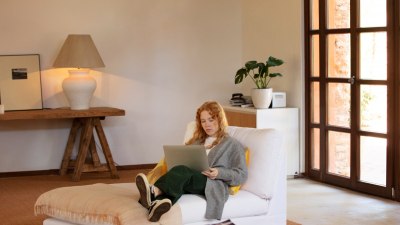What Makes Us Rearrange Our Living Spaces with Shifting Light
Explore how changing light influences our home layouts and the emotional effects of these transformations.

Living spaces are more than just four walls; they are dynamic environments that reflect our moods, needs, and lifestyles. One of the most subtle yet powerful influences on these spaces is the shifting light that changes throughout the day. As sunlight enters our homes, it alters the ambiance, making us feel differently in our own spaces. It's fascinating to consider the factors that lead us to rearrange our living areas in response to this ever-changing natural light.
Understanding the Science of Light
Light has profound psychological and physiological effects on us. The human brain is wired to respond to changes in light, and this can dictate our feelings and actions. Natural light exposure can influence our mood, energy levels, and overall well-being. Studies have shown that natural light can boost productivity and enhance creativity, which may prompt some individuals to reorganize their space to maximize daylight.
The Role of Seasonal Changes
As the seasons shift, the angle and intensity of sunlight also change. During winter months, we may find our homes lacking in natural light, leading to feelings of gloom. To combat this, individuals might rearrange furniture to allow as much light in as possible, or they may choose to utilize light-enhancing decor, such as mirrors or light-colored fabrics. Conversely, during the summer, longer days mean more sunlight. People often seek to balance the abundance of light by creating shaded areas, perhaps through strategic furniture placement or the use of curtains and plants.
Spotlighting Functional Needs
Our needs are ever-evolving. You might start to work from home more often, leading to a desire to create a designated workspace flooded with light. The arrangement can reflect different functions; perhaps the dining area when hosting guests or a cozy reading nook bathed in evening light. As activities change, so does the arrangement of the living space, tailored to harness the best lighting for each function, enhancing our comfort and efficiency.
Aesthetic Appeal and Mood
The aesthetics of light cannot go overlooked. The golden hour, for example, can envelop a room in a warm glow that invites comfort and relaxation. To make the most of these beautiful lighting moments, many find it appealing to rearrange their spaces to highlight these features. It may involve moving a chair to encourage basking in afternoon light or repositioning artwork and decor to reflect the changing colors throughout the day. Light not only influences how we see our spaces but also how we feel within them.
Light and Space Perception
Light shapes our perception of space. Bright areas can make a small room feel larger and more open, while dark spaces may have a constricting effect. When we rearrange our living spaces, light plays a critical role in creating an illusion of spaciousness. This is why people often choose to keep certain areas light and uncluttered, ensuring sunlight can travel freely and make the space feel more expansive.
The Emotional Underpinning of Change
Often, the act of rearranging is fueled by a deep emotional need. Changes in our living situations—like moving in with a partner or welcoming a new family member—prompt us to reevaluate our space. Shifting light can evoke memories and feelings tied to specific areas within our homes. We may find that certain spots resonate with particular moments when illuminated in a certain way, further encouraging us to alter the arrangement in hopes of fostering a different emotional atmosphere.
Cultural Influences on Space Arrangement
Our cultural backgrounds can also play a significant role in how we utilize light in our arrangements. Different cultures have distinct approaches to space usage, influenced by their relationship with natural light. For instance, Scandinavian design often emphasizes natural light, open spaces, and functionality. These cultural nuances may compel individuals to rearrange their homes according to seasonal shifts in light, reinforcing traditional spatial designs while incorporating personal preference.
Environmental Awareness
The growing awareness of environmental impacts is another reason people are motivated to rearrange their living spaces. A desire to conserve energy leads many to focus on natural light, strategically rearranging furniture to enhance sunlight exposure and reduce reliance on artificial lighting, particularly in living areas where sustainability is prioritized. This shift in mentality not only optimizes our spaces but aligns our lifestyles with eco-conscious values.
Creating a Sense of Flow
Rearranging furniture in accordance with light patterns can enhance the flow of a living space. For example, a bright and airy living room can facilitate a sense of connectivity with adjacent areas of the house, promoting openness and interaction. When light flows through a home seamlessly, people are more inclined to experiment with their arrangements until they find a balance that complements the natural rhythm of light, leading to a unified experience across all spaces.
Psychological Benefits of Rearranging
The psychology behind home organization shows that many individuals derive satisfaction from rearranging their items. Changing light can act as a catalyst, prompting these alterations. When we change our spaces, we often feel a sense of renewal or rejuvenation. Hence, responding to the shifting light by rearranging our living spaces can provide a much-needed refresh, breaking monotony and infusing our day-to-day lives with a constant source of inspiration.
Incorporating Technology
Smart home technology allows for an enhanced interaction with light. IoT devices can help track lighting patterns and intensity, prompting us to adjust arrangements based on real-time analytics. As technology evolves, so do our capabilities to engage with and respond to light shifts. Smart bulbs can simulate natural light patterns, allowing for a curated ambiance that feels both dynamic and cozy, further encouraging individuals to adapt their spaces regularly.
Personalization and Identity
Our homes serve as reflections of our identities. When we rearrange our living spaces, we are often expressing personal narratives conveyed through the use of light. People might rearrange furniture to showcase artworks that capture memories or to highlight spaces that resonate with their personalities. Natural changes in light can inspire these expressions, creating a warm and inviting environment that tells our stories.
In the end, our relationship with light profoundly impacts how we view and experience our surroundings. The evolution of our living spaces in response to shifting light is a testament to our adaptability and creativity. Whether prompted by the seasons, emotional needs, cultural influences, or technological advancements, the act of rearranging becomes an act of self-expression and renewal. Embracing natural light not only enhances our physical spaces but also enriches our emotional landscapes, ultimately leading to a deeper connection to the environment we inhabit.











